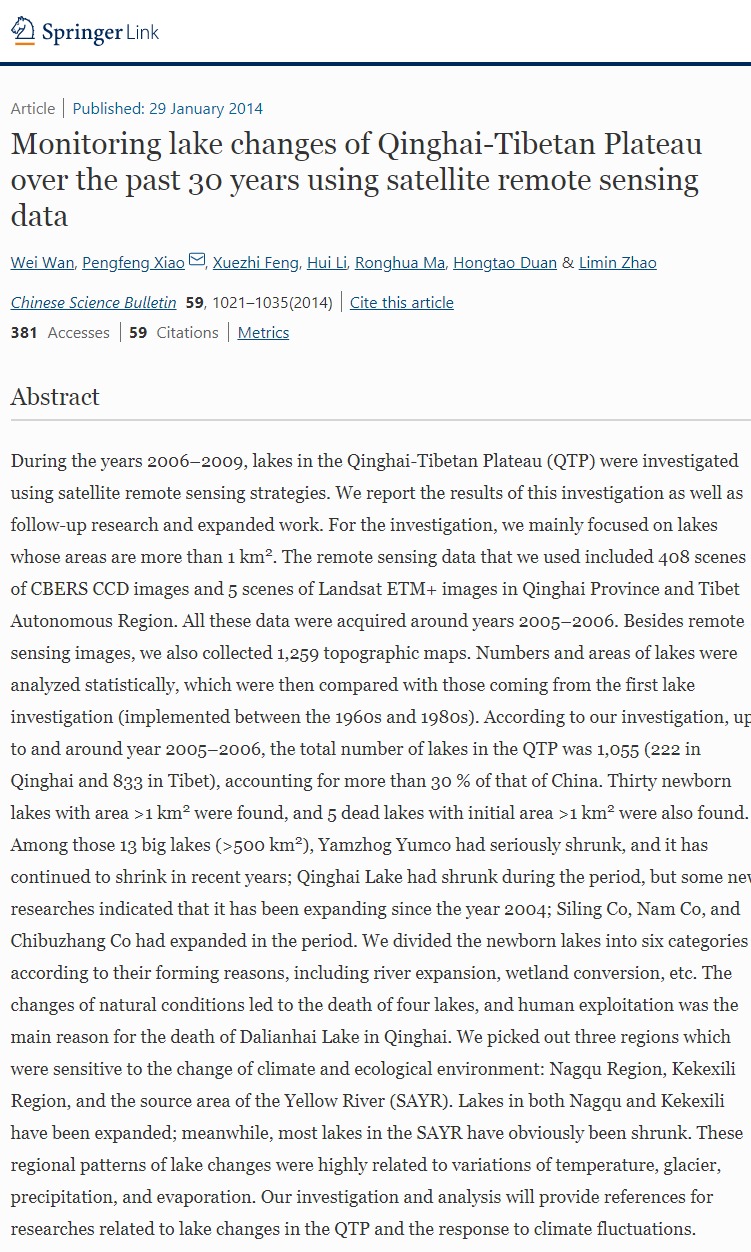
During the years 2006–2009, lakes in the Qinghai-Tibetan Plateau (QTP) were investigated using satellite remote sensing strategies. We report the results of this investigation as well as follow-up research and expanded work. For the investigation, we mainly focused on lakes whose areas are more than 1 km2. The remote sensing data that we used included 408 scenes of CBERS CCD images and 5 scenes of Landsat ETM+ images in Qinghai Province and Tibet Autonomous Region. All these data were acquired around years 2005–2006. Besides remote sensing images, we also collected 1,259 topographic maps. Numbers and areas of lakes were analyzed statistically, which were then compared with those coming from the first lake investigation (implemented between the 1960s and 1980s). According to our investigation, up to and around year 2005–2006, the total number of lakes in the QTP was 1,055 (222 in Qinghai and 833 in Tibet), accounting for more than 30 % of that of China. Thirty newborn lakes with area >1 km2 were found, and 5 dead lakes with initial area >1 km2 were also found. Among those 13 big lakes (>500 km2), Yamzhog Yumco had seriously shrunk, and it has continued to shrink in recent years; Qinghai Lake had shrunk during the period, but some new researches indicated that it has been expanding since the year 2004; Siling Co, Nam Co, and Chibuzhang Co had expanded in the period. We divided the newborn lakes into six categories according to their forming reasons, including river expansion, wetland conversion, etc. The changes of natural conditions led to the death of four lakes, and human exploitation was the main reason for the death of Dalianhai Lake in Qinghai. We picked out three regions which were sensitive to the change of climate and ecological environment: Nagqu Region, Kekexili Region, and the source area of the Yellow River (SAYR). Lakes in both Nagqu and Kekexili have been expanded; meanwhile, most lakes in the SAYR have obviously been shrunk. These regional patterns of lake changes were highly related to variations of temperature, glacier, precipitation, and evaporation. Our investigation and analysis will provide references for researches related to lake changes in the QTP and the response to climate fluctuations.